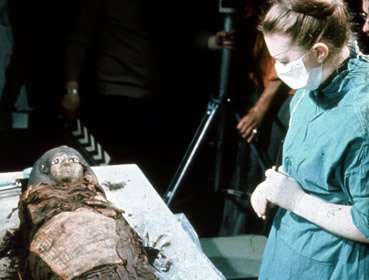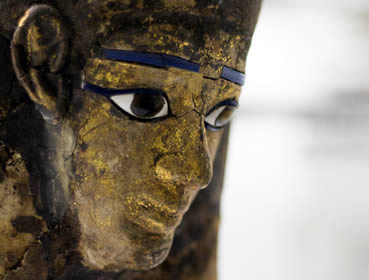
Studying Manchester Mummy 1770
In 1975, the mummy of a young ancient Egyptian girl became the centre of a great deal of attention.
She wasn’t a famous figure from history like Tutankhamun, an exciting new discovery, or even a beautiful example of an ancient embalmer’s art.
She was just a fairly poorly preserved mummy who lay undisturbed in Manchester Museum’s stores for some time, without even a name beyond the catalogue number she had been given.
Her story is a fascinating insight not only into life and death in ancient Egypt, but also to an important stage in the history of mummy studies.
Mummy 1770 became famous because she was the subject of a scientific investigation that brought together a team of Egyptologists, scientists and medical researchers trying to find out more about Egyptian mummies and the ancient Egyptians themselves.
This investigation was the first of its kind to take place in the UK for decades, and it influenced others to undertake similar projects.
The research team found answers to some of their questions, but Mummy 1770 presented them with mysteries that challenged their skills. Her story is a fascinating insight not only into life and death in ancient Egypt, but also to an important stage in the history of mummy studies.
These web pages will lead you through the study of Mummy 1770, from the early days of the Manchester Mummy Project to the research still being carried out over 40 years later.
You will hear from the people involved in the original study, and learn about the different analytical tools available to those studying mummies and the information they can provide. You will also be able to explore similar projects that took place during this exciting time for the study of mummies.




